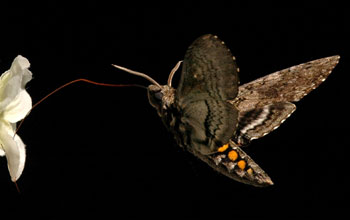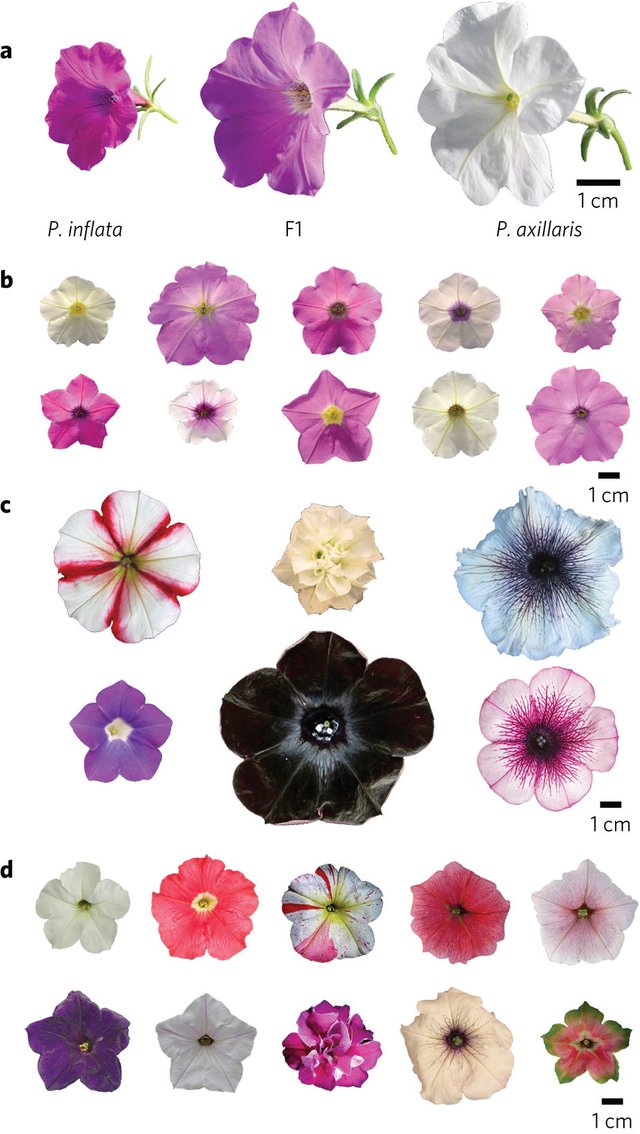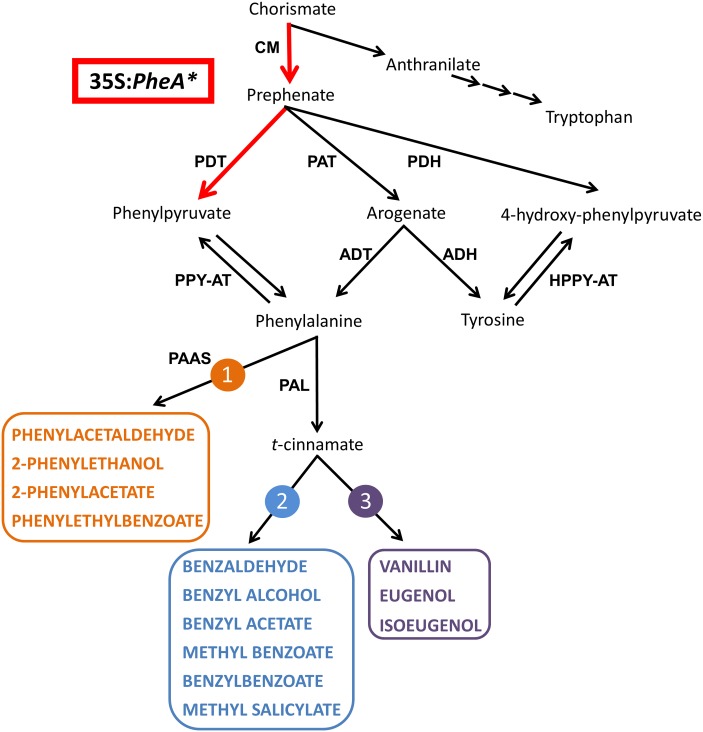Floral Scent - Part 2
This post is a continuation of my earlier post: Floral Scent - Part 1, and will again focus on Petunia hybrida, a member of the Solanaceae family of angiosperms. I will try to briefly review some of the other major findings on floral scent production by flowers of this species, with particular attention to the most recent literature. In subsequent posts I will turn attention to other angiosperm species.
Petunia hybrida emits floral scent nocturnally
Kolosova et al. (2001) first demonstrated that Petunia hybrida flowers emit their major scent compound (methyl benzoate) mostly at night, and that key enzymes in the biosynthetic pathway from phenylalanine --> --> methyl benzoate are up-regulated to achieve this noctural emission.
It has now been established that at least two transcription factors, ODORANT1 (ODO1) and EMISSION OF BENZENOIDS II (EOBII), regulate the volatile benzenoid/phenylpropanoid pathway in petunia petals (Verdonk et al. (2005) and Van Moerkercke et al. (2011)). These evening-expressed transcriptional regulators, up-regulate the transcription of enzymes involved in the processing of precursor molecules through the Floral Volatile Benzenoid/Phenylpropanoid (FVBP) (Fenske et al. (2018)). This circadian regulation of plant flower scent emission appears uniquely designed to attract the primary pollinator, the night-active hawkmoth pollinator Manduca sexta, which in turn has a circadian rhythm aligned with petunia's (Fenske et al. (2018)).

Hawk Moth Manduca sexta. From: NSF News
Petunia genome
Petunia hybrida, often referred to as Petunia x hybrida, is a hybrid between two wild species; a white-flowered, moth-pollinated P. axillaris, and P. inflata. The latter is often colored and pollinated by bees. The genomes of these two wild petunia species have now been sequenced (Bombarely et al. (2016)), and this development opens up many new and exciting avenues for genetic investigations of the synthesis and regulation of floral pigments and scent in this model species.

Origin and diversity of P. hybrida flowers. From: Bombarely et al. (2016)
The majority of the ~20,000 genes of Petunia hybrida analyzed with transcriptomics data appear to be derived from P. axillaris (~15,000), with only ~600 genes assigned to P. inflata. This indicates that the P. inflata parent makes only a minor contribution to the P. hybrida gene space (Bombarely et al. (2016)). Thus, it is likely that the hawkmoth-pollination strategy employed by P. axillaris, including nocturnal floral scent emission, may have been preferentially inherited by P. hybrida. Bee-pollinated P. inflata often has purple flowers that produce only a limited amount of scent (Bombarely et al. (2016)). P. axillaris emits an abundant blend of floral benzenoid and phenylpropanoid volatiles, whereas P. inflata only emits benzaldehyde (Bombarely et al. (2016)). Volatile emission in P. axillaris (as in P. hybrida) is under circadian control, peaking at dusk when its nocturnal hawkmoth pollinator visits. Genes encoding circadian clock regulators are now accessible from these petunia genome sequences, and further investigation of these clock components will likely shed light on the intricate control of floral scent emission in the near future.
Petunia produces non-volatile sugar conjugates of scent compounds
In our early studies of the benzenoid network in Petunia hybrida using deuterium-labeled phenylalanine (see Part 1 of this series) we were unable to identify all metabolites. A couple of unknown conjugates (speculated to be sugar derivatives of benzoic acid) were found, but at the time we were unable to obtain precise chemical structures of these molecules (Boatright et al. (2004)). Moreover, the labeling of phenylethanol suggested it was being metabolized by an unknown pathway. It is now known that P. hybrida synthesizes non-volatile glycosylated scent compounds, including sugar conjugates of benzyl alcohol and phenylethanol, that are stored in cell vacuoles (Cna'ani et al. (2017)).
Phenylpyruvate as a precursor of petunia scent compounds
As noted in Part 1 of this series, our investigations of scent production in petunia led to the discovery of an alternative pathway of phenylalanine biosynthesis involving phenylpyruvate as an intermediate (Yoo et al. (2013)).
Phenylpyruvate has now been confirmed to be a precursor of scent compounds in P. hybrida (Oliva et al. (2017)).

A schematic diagram of the metabolic networks of scent biosynthesis in petunia flowers. From: Oliva et al. (2017)
Concluding thoughts
A #steemstem message to young scientists from an old, retired one: this, and my previous post in this series, tries to illustrate how science takes place in incremental steps. One finding leads to another and the field blossoms. The first findings may not provide all of the answers, and some conclusions may be erroneous (see Part 1). That's O.K., science tends to be self-correcting when others examine and probe the evidence in more detail. Science is a communal and iterative process!
Please feel free to comment or ask questions about this post in the comments section below. I will try to answer questions as soon as possible.
Amazing
Thank you!